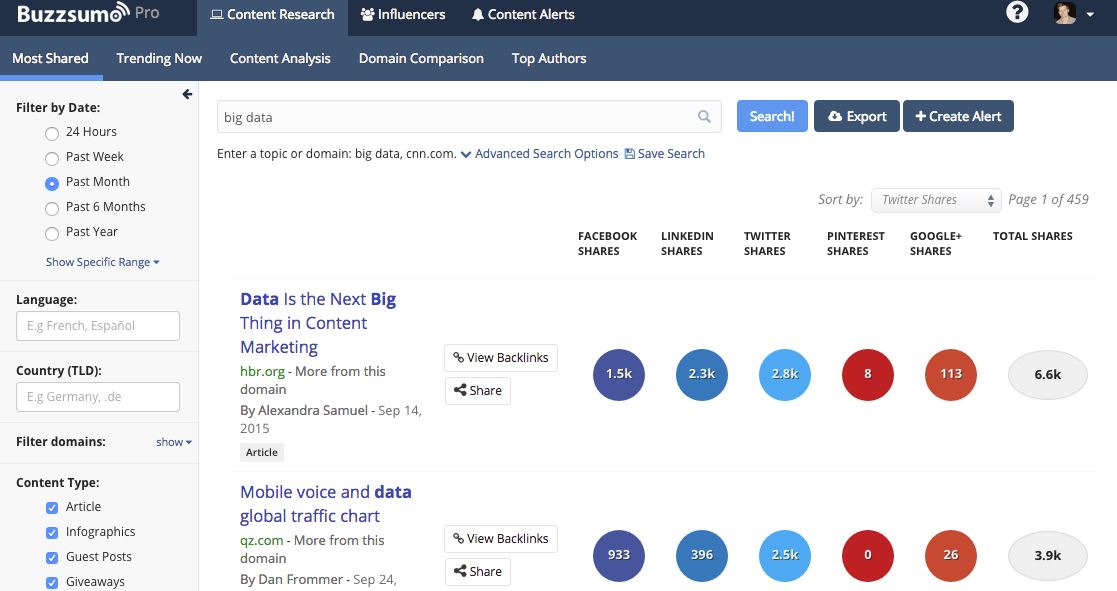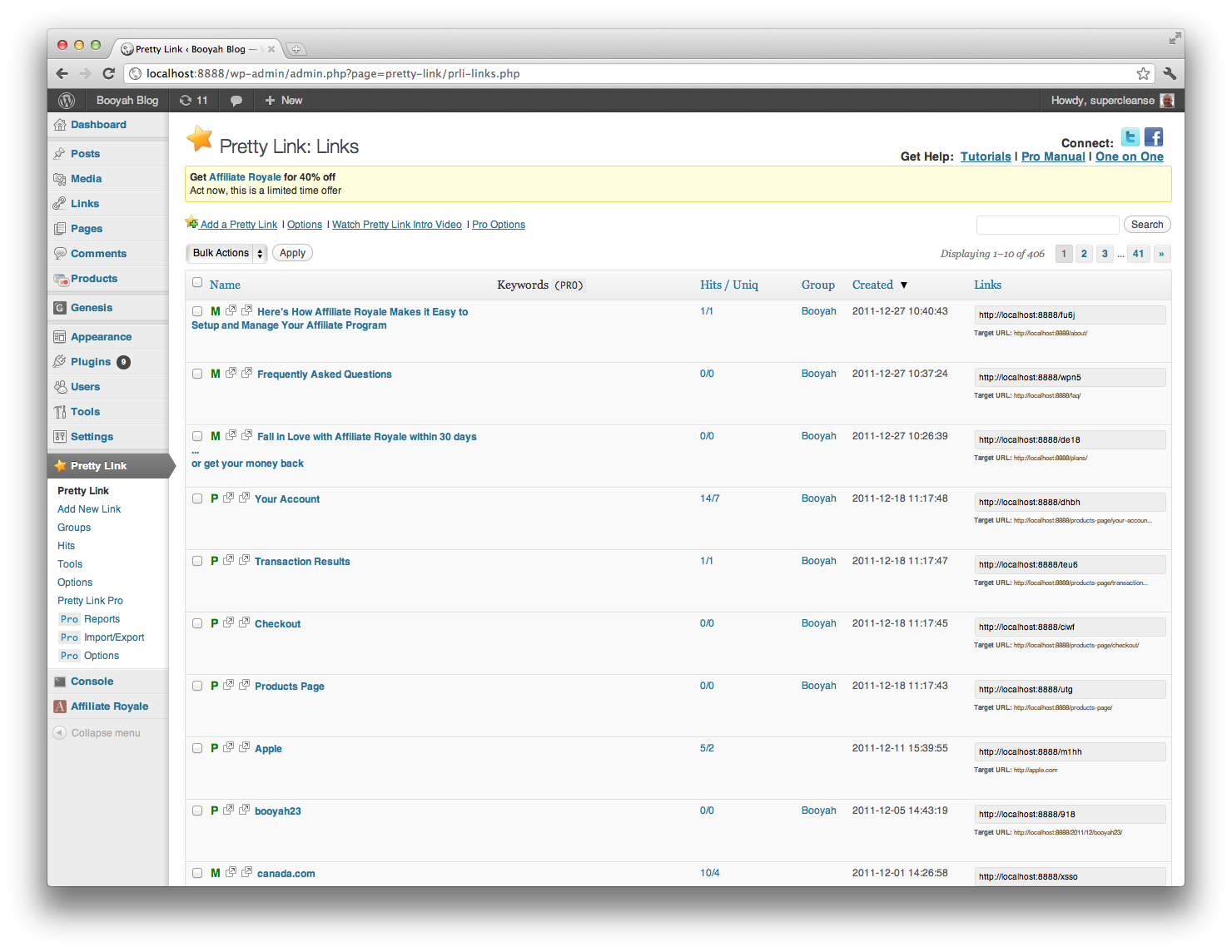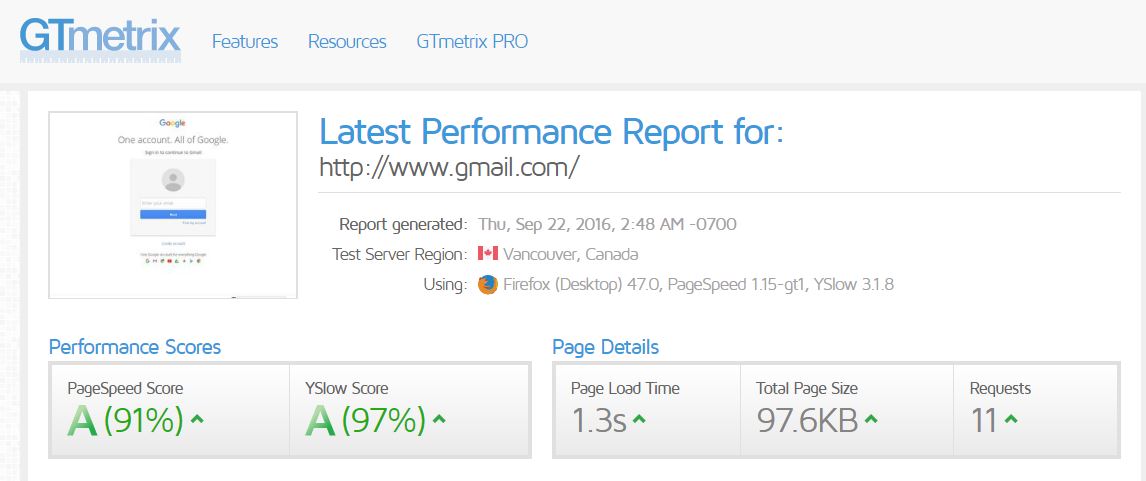The affiliate marketing field is one of the hottest fields in internet advertising today, and millions of traders around the world started getting into affiliate marketing to reach significant profits by marketing products or services through affiliate marketing programs (for example, the famous affiliate program of Amazon). Affiliate marketers will always strive to create secure and measurable revenue streams over time, while investing as little effort as possible on their part. The ultimate goal is to create a revenue stream which generates passive income for the trader. As the field becomes more competitive, and many traders are competing for the same clientele, the use of external tools (aimed at improving the marketing process) is becoming increasingly important in order to gain an advantage and increase sales.
The tools in this post are categorized by a few main groups. A professional affiliate marketer will use many advertising channels, and will analyze the data obtained regularly. Some forms of advertising will be financed and some organic, some of the methods will be Inbound and some Outbound, as is appropriate for the respective product marketed. The main lesson that marketers are learning firsthand as they gain experience in affiliate marketing is that without creating meaningful value for the user, it will be very difficult to succeed. Creating added value would be through fresh and interesting content, informational videos, infographics, or any other that would make users enjoy added value in the buying process (as another example, duplicate content that appears in a large number of sites has no added value for the user).
Within the list you will find tools to help you get ideas for writing content, analytical tools, tools for effective use of social networks and many other tools. All the tools listed have been proven effective and having added value for any affiliate marketer, whether you are just starting out or you have years of experience. Some of the tools are free; some have a freemium version and some require a fee. Occasionally new tools will be added to the list, so visit this post in the future for more updates, and in any case, you should subscribe to our newsletter to receive regular updates.
1. Buzzsumo – most affiliate marketers create content on a regular basis, but how do you know which content would win higher percentages of user engagement? By using Buzzsumo you can get the information easily. All you need to do is insert topic / keywords relevant to the products you are marketing and you get a list of contents which includes the following information: the amount of shares in leading social networks (Facebook, Twitter, LinkedIn, etc.), sites which made links to posts and even the specific users who shared the contents. By using the tool you can get ideas about contents on topics which already have a proven record, and get more information about the area of activity.

2. Answer The Public – another way to get ideas for writing subjects. After inserting the subject which you wish to write about, you will get a list of options sorted by questions asked in search engines and by suggestions. How does it work? The tool uses autocomplete suggestions from the search engines Google and Bing, while at the same time conducting automatic cross-checking against questions or connecting phrases combined with the keywords entered. The result allows you a glimpse into the possibilities of combining the phrase with other topics based on the way in which people search – this is great information for any marketer who wants to know how best to approach their audience.
3. HubSpot’s Blog Topic Generator – one of the key elements of any content you create is the title you choose. Most users decide whether they want to spend a few minutes reading your content based only on the title you choose. The title can make or break your content, so it is important to select a title which gets the job done. HubSpot’s tool will find ideas for your titles and posts based on the keywords you enter. You will be able to use these ideas or create your own variations based on them.
4. Portent’s Content Idea Generator – a nice tool which finds spicy (bordering on hot) titles for your content based on the topics you wish to write about. Some of the titles produced by this tool will be ridiculous or funny, but even from these titles you will learn the right way to phrase interesting and to the point titles.
5. The Google keyword tool – want to know which key phrases on Google have significant search volumes? By using this tool you can find areas which users are interested in on Google and this way focus on the relevant products by advertising them through sponsored advertising on Google AdWords or by the organic search results of Google. You can focus on results by countries, languages and more. In the tool’s current form it is not enough to have an Adwords account; you would need also an active campaign in order to get search volumes in various areas.
6. Google Search Console – this tool is intended for marketers having existing sites that already get organic traffic from Google. The Search Console shows you the number of people exposed to your site in the date range you define in the Google search engine and the number of people who clicked on the search result for your site. Why would this tool help you? By using this tool you will get information about keywords and areas with significant search volumes which you were not aware your site appears in, and by using this information you can strengthen this specific area based on the relevant keywords.
7. Google Analytics – the most commonly used analytics tool in the world, this tool will get you quality information about the source of users’ traffic to your site and about their behavior on the site. This tool will help you focus your advertising channels and make them most efficient by analyzing their effectiveness. To complete the picture about the behavior of visitors on your site you can also use tools which record the visitors’ behavior and heatmaps. Want to learn more about Google Analytics? We wrote a post especially for you.
8. Google Alerts – it is very important to stay up to date regarding everything that is happening in the content area relevant to you, and Google has the perfect tool to ensure you always stay up to date. All you need to do is define the relevant topics for the affiliate programs in which you are participating, and Google will notify you (you can set the frequency) whenever new content is added onto Google’s index about the relevant topic. As long as you stay up to date, you can ensure that your way of approaching clients in your area of activity is the best one.
9. Google Trends – Google has access to the largest information base in the world with regards to trends and interests of users all over the world. By using Google Trends you can find out what the current trends are in the target country in which you market, and focus on products of the hottest areas. This tool also provides you the option to compare a few areas in order to see the trend level of each one of the areas over time compared to others.

10. SEMrush – research of competitors is a serious matter, and in order to get the best results you should use the best tools available on the market. The SEMrush tool allows you to receive information on leading competitors in your arenas of activity by entering keywords or by entering a link to the site. After entering your site’s address (or your competitor’s) you will receive an estimate of the number of visitors to the site, the locations where the site is positioned high in the Google search engine, links to competing sites and more. You can use the tool also to get ideas for recommended keywords for organic promotion, and also to get to know the active competitors in the arena in which you market.
11. Optimizely – you set up a landing page and it has high conversion rates, but is there changes you can make on your landing page to improve the conversion rate? Instead of guessing, by performing A/B Testing you can easily test your assumptions. Optimizely have revolutionized the area of A/B Testing, since they created a product that allows anyone with a landing page or a website to modify them by using a simple visual editor, and to run experiments that give you assessment which variation works better. All you need to do is implement the Optimizely short code to your web pages, and think of ideas for experiments. The more experiments you perform, so you improve your internet assets and achieve better results.
12. Bit.ly – affiliate marketing is comprised in part of unique links which you receive from affiliate programs which allow you and the program owners to know how many people who you directed turned into conversions (bought the product, signed up for a newsletter, etc.). If you use the link of the program directly, you will not have information regarding the number of people you directed, and that would be a pity. Bit.ly can achieve two goals for you: shorten cumbersome links that you get and give you statistics and analytics regarding the use of the links. From now on, all the traffic directed to the affiliate program will pass through your link that will allow you to know exactly what is happening at any time.
13. Pretty Link – This is a WordPress plugin that serves the same purpose as Bit.ly, but the shortening of web addresses will be made through your own domain (and in the most simple way through the WordPress interface). The great advantage of this tool is that it allows you to display links that include your domain name, which will appear to the users as more branded and reliable and secure because users will get the impression that they stay in your domain (it will also keep all the data on your own server instead of relying on external services).

14. ClickMeter – this tool is also designed to monitor affiliate links. It is intended for more advanced affiliate marketers. This tool allows tracking of conversions that came through the links, monitoring traffic sources to links and sharing information with colleagues, clients and more.
15. Buffer – one of the most effective marketing channels is social media. Anyone who experienced marketing on social media probably knows how difficult it feels to manage all the promotions on various networks. Buffer allows you to organize your entire activity in one place. The tool allows you to schedule all advertising on leading social media (Facebook, Instagram, Twitter and others) in a simple manner, so that all you need to do is prepare all the marketing materials in a buffer, set the publication date, and from then on Buffer will do the work and will post the content at schedules and sites which you set.
16. MailChimp – another powerful marketing tool is e-mailing to mailing lists which you have gathered. The next step, after you have gathered the e-mail addresses of potential users who want to know more about your products, is sending to these mailing lists e-mails having the right message at the right time. MailChimp gives you the option to send e-mails to large mailing lists simply (as opposed to direct mail through Gmail that would enter your e-mail into spam lists). You can then learn about your e-mails opening rates, and improve the e-mails you send regularly. By integrating API you will be able to add e-mail addresses immediately after the visitor leaves their details on your site’s contact forms.
17. WordPress – the chances you haven’t heard of this platform are very slim, but not everybody knows that beyond the possibility to create an independent WordPress site which is stored on your server, there is also the possibility to create sites or blogs through the WordPress site directly, which can serve you well in setting up information pages or satellite sites for the services you market through the affiliate programs.
18. GoDaddy – as part of ongoing marketing activities you would probably need a large number of domains for sites you set up for marketing purposes. I recommend maintaining all domains under one registrar to ease the work. GoDaddy provides a convenient and simple system for operating domains. You can get information on domains, update DNS, and renew domains in a simple and organized manner. Sometimes you will find hot deals for the purchase of domains, it is worth following.
19. GTmetrix – in building websites and landing pages there is very great importance to page load time. As the page will load more slowly, website conversion rate will decrease, because more users will leave the page while waiting for a page to load. A page that loads quickly provides a better user experience and thereby increases conversion, and will help you improve your position locations on Google. GTmetrix is one of the most advanced tools on the market today for examining the loading time of web pages. The tool will show you the load time and full analysis of the site by categories of recommendations which will include, among others, load times of images, internal directing on the site, reducing scripts loading time, inserting cache and more. You can also receive a distribution chart of all the elements loaded on the site, find the problem elements on the site and take care of them.

20. Pingdom – another excellent tool for checking the speed of web pages. This tool will allow you also to check your site from a few servers placed in different locations around the world. Currently you can find servers in the United States, Europe and Australia. Like GTmetrix, this tool also features a chart of elements’ loading time on the site. You can use the two tools for cross-checking data in order to reach a high level of optimizing load times of pages on your website.
21. W3 Total Cache – this is a popular WordPress plugin that will activate a caching system on your website. Here we find one of the ways to significantly improve the loading time of your pages. Using this plugin, your site will have significantly higher performance, through the use of cache at user level, server, database and more. Expect excellent results; you can divide your site’s loading time in two, before and after you installed W3 Total Cache.
22. Yoast SEO – with over 30 million downloads, this is another WordPress plugin that will organize for you everything related to SEO on the site (the settings related to organic promotion of the site), whether it is the setting of Meta Description tags, Title tags, configuration of Google Analytics, Search Console and many other options.
23. Camtasia – nothing sells more than visual content. Once you implement short informational videos about your products with explanation in audio, you can increase your sales rate significantly. All you need to do to produce videos in a simple way is to use Camtasia to create screenshot videos that will provide your users a simple learning experience about the products you are promoting. This tool allows you to record a screen, add audio and edit videos without special professional knowledge.
24. Gifmaker.me – sometimes there is no need for a whole video and it is sufficient to have a short animation in GIF format which is actually a series of pictures with regular transition of a few milliseconds between pictures. Using GIF can illustrate an idea for your users or even train them about a certain topic. An example GIF:

25. Zapier – a sophisticated interactions tool that has become very popular lately. The tool allows you to create automated workflows through interactions with a wide range of tools which include the various Google services, Slack, Asana, leading CRM services and others (for a complete list of integrations click here). The options available for you with this tool are limitless, for example, you can add a column to a table in Google Spreadsheets every time an e-mail arrives from a specific recipient, and at the same time add the recipient to your mailing list in Mailchimp and many more varied options. This is an excellent tool for creating automation in your daily processes, and thus saves you huge amounts of time.
26. Fastreel Video Editor – It is a useful tool for online video editing. It will help you make quick video guides for your affiliates, promotional clips, ads, and even corporate videos. The toolkit is quite extensive: you can trim and cut footage, apply filters and special effects like slow motion and split-screen. The tool also provides you with a collection of ready-made templates and the ability to create a video from scratch. You can upload images in JPEG and PNG or video files in MP4, MOV, MKV, AVI, and WMV formats.

The list in this post will be updated from time to time with additional tools to ease the process of marketing. If you have recommendations about tools that you use daily or questions regarding the tools on the list (or anything else), please share with us in the comments!




